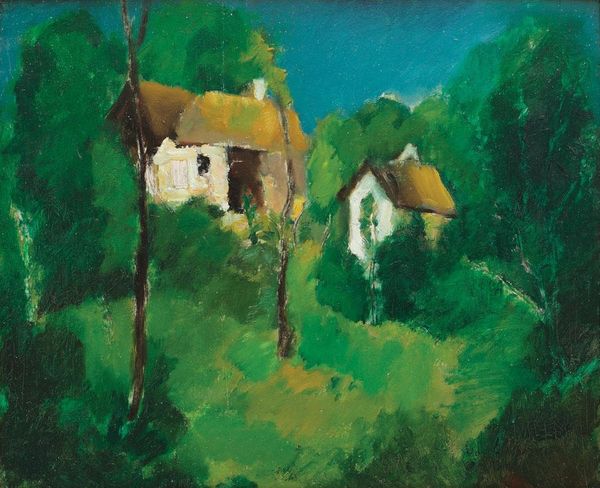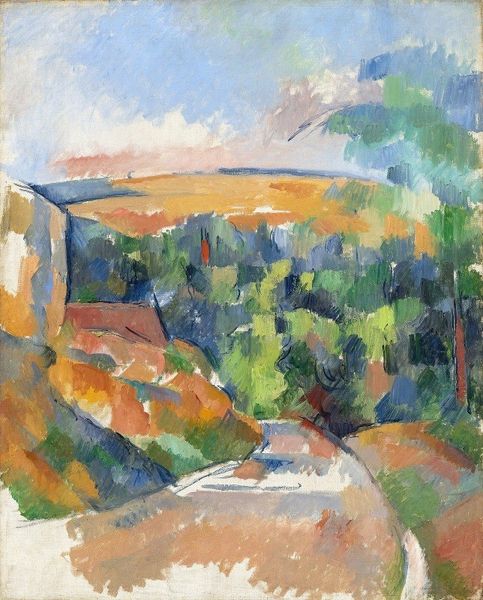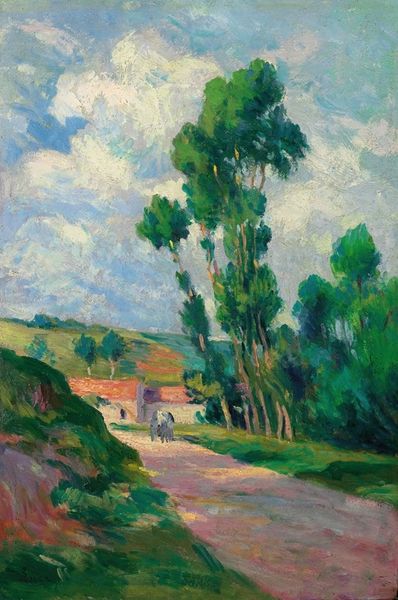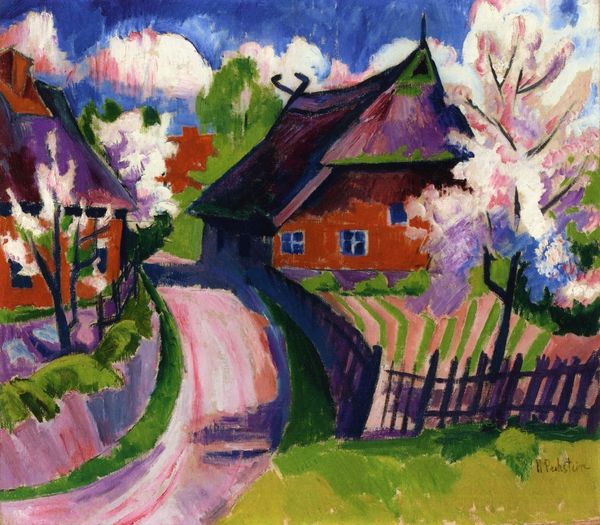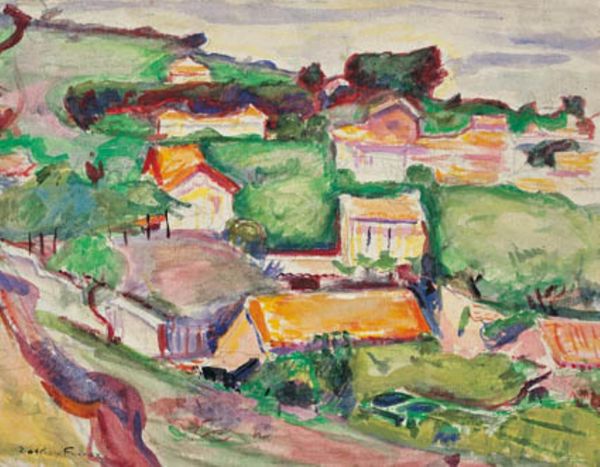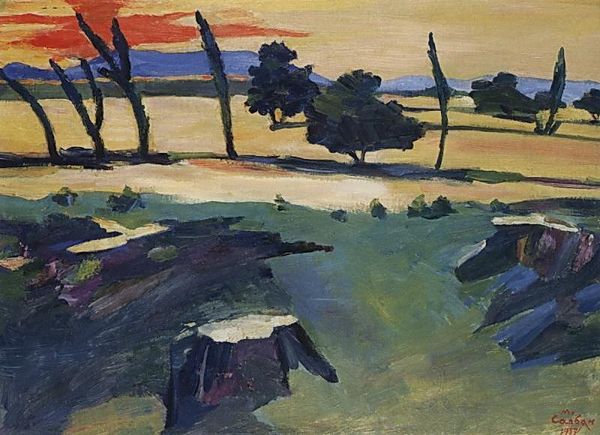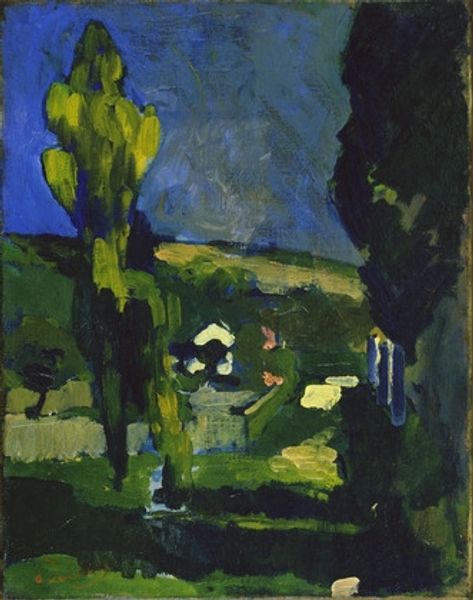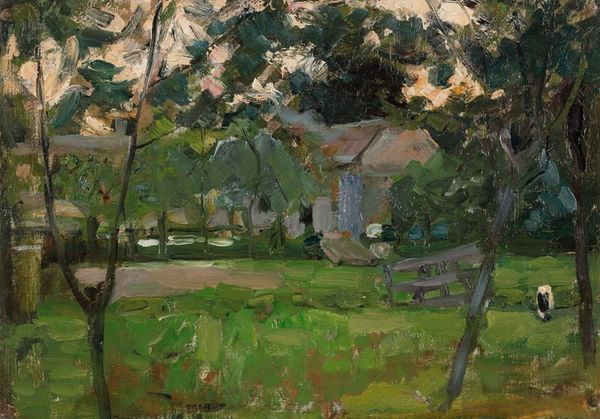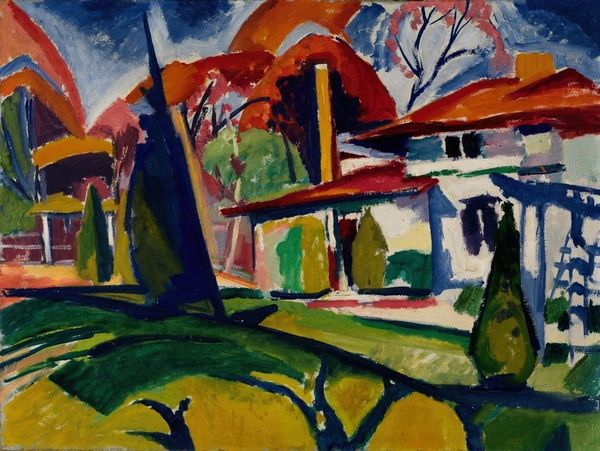
Copyright: Istvan Ilosvai Varga,Fair Use
Istvan Ilosvai Varga made this oil painting, Nagybánya, which depicts a rural scene, possibly in Hungary or a surrounding region. The vivid colors and abstracted forms suggest a connection to early 20th-century Expressionism, a style that often conveyed emotional intensity and a subjective interpretation of reality. The title refers to a town known for its artist colony, which played a vital role in the development of Hungarian art. It became a space where artists explored new styles and approaches outside the rigid academic structures of the time. The avant-garde were taking hold and this painting could be read as a comment on the move away from traditional representations. To truly understand this work, we must look at the historical context of the Nagybánya colony and the socio-political forces that shaped the artistic landscape of Hungary in the early 20th century. Investigating archival documents and critical reviews from that time can help reveal the complex interplay between art, society, and the institutions that supported or challenged it.
Comments
No comments
Be the first to comment and join the conversation on the ultimate creative platform.

